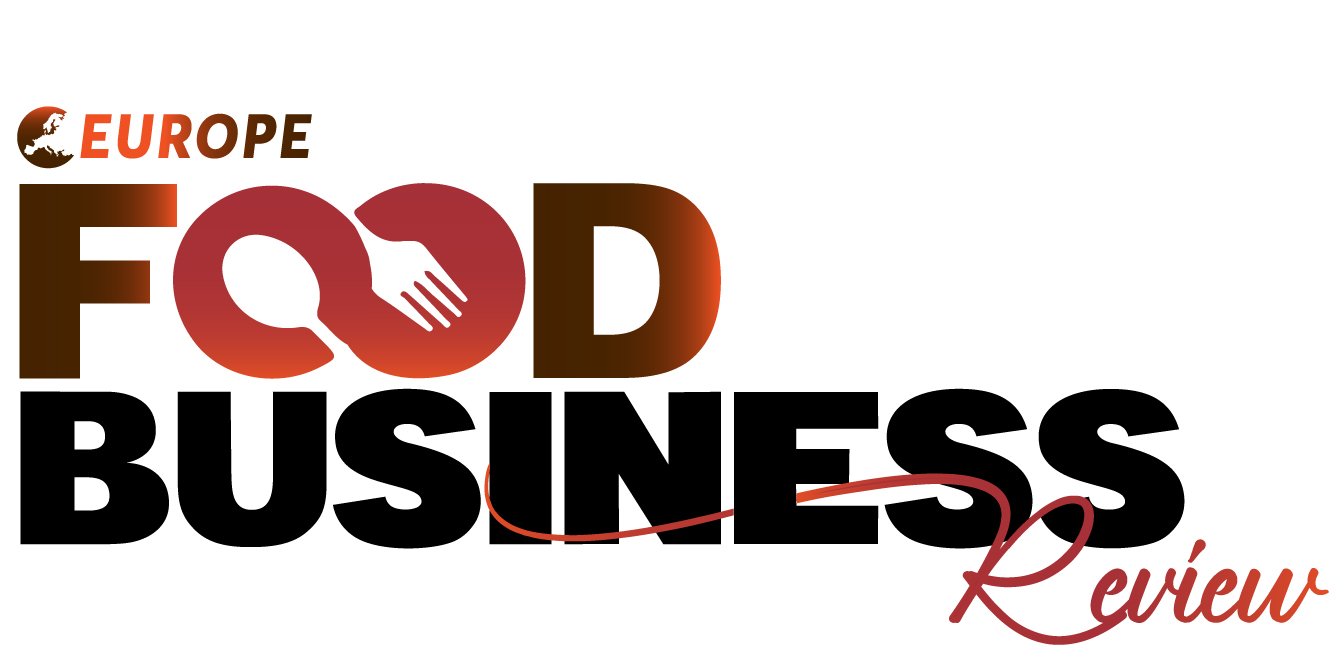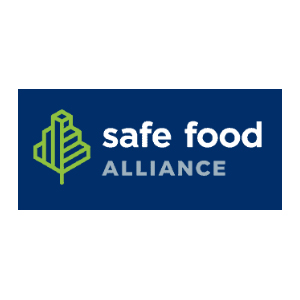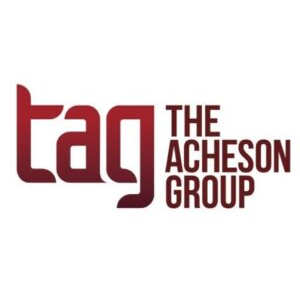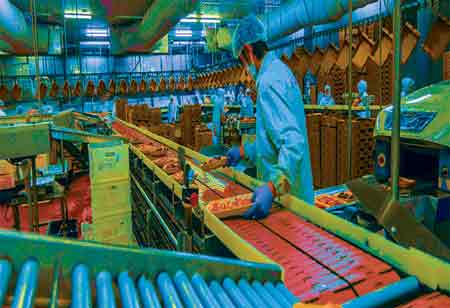\\\\ Top Food Safety Consultants/Companies \\\\
\\\\\\\\ Top Food Safety Consultants/Companies \\\\\\\\
-
Sani Professional®
Sani Professional stands out by simplifying food safety and hygiene for businesses. Their innovative, color-coded cleaning, sanitizing, and disinfecting solutions eliminate the need for complex procedures, allowing for easy, effective, and compliant use. With a focus on preventing community-acquired infections, Sani Professional offers convenient, pre-measured products that ensure consistent results.
-
Burdock Group
Burdock Group is a leading safety and regulatory consulting firm with over 30 years of experience. They provide compliance solutions for food, beverages, dietary supplements, pet food, cosmetics, and pesticides. Assisting clients with FDA, EPA, and USDA regulations, they ensure product safety, market approval, and regulatory compliance across industries.
-
GoHACCP
GoHACCP is a food safety consulting firm specializing in HACCP plan development for restaurants, food manufacturers, agriculture, and slaughterhouses. They offer GFSI certification assistance, implementation support, software solutions, and training programs. Their tailored solutions help businesses achieve compliance, enhance food safety, and maintain industry standards efficiently and effectively.
-
Kestrel Tellevate LLC (KTL)
Kestrel Tellevate LLC (KTL) is a consulting firm specializing in environmental, health and safety (EHS), food safety, quality management, and compliance services. They help businesses and government agencies manage risks, ensure regulatory compliance, and implement management systems through auditing, assessments, certification support, and tailored information management solutions.
-
Safe Food Alliance
Safe Food Alliance, a division of DFA of California, provides food safety services, including laboratory testing, training, consulting, and third-party audits. They support the food industry by enhancing safety programs, ensuring compliance, and simplifying operations. Their expertise helps businesses maintain high standards and navigate complex regulatory requirements with confidence.
-
The Acheson Group (TAG)
The Acheson Group (TAG), founded by former FDA Associate Commissioner Dr. David Acheson, is a global food safety and public health consulting firm. TAG helps businesses mitigate operational, regulatory, and reputational risks through expertise in food safety culture, supply chain management, crisis response, and regulatory compliance solutions.
More in News
The New Frontier of Beverage Packaging Innovation
Wednesday, December 10, 2025
The beverage packaging industry is evolving from mass-produced, disposable models to intelligent, sustainable, and personalized solutions driven by technology and shifting consumer expectations. This evolution is not merely about aesthetics; it's a fundamental reimagining of the entire packaging lifecycle, from creation to consumption and beyond. The future is one where autonomous production lines operate with unprecedented efficiency, biodegradable materials seamlessly return to the earth, and hyper-personalized packaging turns every beverage into a unique experience. The Rise of the Autonomous Packaging Line The beverage packaging facilities of tomorrow will be marvels of automation and artificial intelligence. The quiet precision of interconnected, self-optimizing systems will replace the relentless hum of human-operated machinery. Autonomous production lines, powered by a sophisticated interplay of robotics, machine learning, and the Internet of Things (IoT), are set to revolutionize every stage of the packaging process. From the moment raw materials enter the facility, intelligent systems will take control. Autonomous mobile robots (AMRs) will transport materials with unerring accuracy, while AI-powered vision systems inspect for imperfections with a level of detail that surpasses human capability. This relentless pursuit of perfection extends to the filling and sealing processes, where robotic arms, guided by real-time data, will ensure consistent quality and minimize waste. But the true power of the autonomous line lies in its ability to learn and adapt. IoT sensors embedded throughout the production process will continuously collect data, feeding it into machine learning algorithms that can predict maintenance needs, optimize energy consumption, and even adjust production parameters on the fly to account for variations in materials or environmental conditions. This creates a closed-loop system of continuous improvement, where the packaging line becomes more efficient and reliable with each passing day. This high degree of automation will enable a level of flexibility and agility previously unattainable. The ability to quickly and seamlessly switch between different packaging formats, sizes, and designs will be crucial in a market that demands ever-greater variety and customization. The autonomous packaging line is not just about replacing human labor; it's about creating a more intelligent, responsive, and resilient production ecosystem. The Dawn of Biodegradable and Edible Formats In an era of heightened environmental consciousness, the beverage industry is moving beyond the traditional "reduce, reuse, recycle" mantra and embracing a truly circular approach to packaging. The future lies in materials that are not just recyclable, but fully biodegradable, and in some cases, even edible. This paradigm shift is being driven by a wave of innovation in material science, with researchers and engineers developing a new generation of packaging solutions derived from renewable, plant-based sources. Innovations in sustainable materials are turning imagination into reality, with everyday products like bottles, cartons, and cups now being crafted from algae, mushroom mycelium, and sugarcane pulp. Biodegradable polymers, derived from sources like corn starch and cellulose, are being engineered to provide the same level of protection and durability as traditional plastics, but with one crucial difference: at the end of their life, they will naturally decompose, returning to the earth without leaving a trace of harmful microplastics. The innovation doesn't stop there. The concept of "zero-waste" is being taken to its logical conclusion with the development of edible packaging. Imagine peeling a fruit-flavored, edible film from your energy drink, or consuming a beverage from a cup that is itself a tasty, nutritious snack. These revolutionary concepts are not just about reducing waste; they are about creating a more holistic and enjoyable consumption experience. The move towards biodegradable and edible formats represents a fundamental rethinking of our relationship with packaging. It's a shift from a linear, "take-make-dispose" model to a circular one, where packaging is seen not as a waste product, but as a valuable resource that can be safely and sustainably returned to the biosphere. The Era of Hyper-Personalization and Connected Experiences In a world saturated with choices, the ability to create a personal connection with the consumer is paramount. The future of beverage packaging is one where every bottle, can, and carton becomes a canvas for hyper-personalization, a direct and interactive channel of communication between the brand and the individual. This is being made possible by a convergence of digital printing technologies, smart packaging solutions, and the power of data. Gone are the days of one-size-fits-all packaging. Advanced digital printing techniques are making it possible to create unique and customized designs for individual consumers, or even for specific occasions. Imagine a bottle of wine with a personalized label for a wedding, or a can of soda featuring the name and photo of favorite sports team. This level of customization transforms the package from a mere container into a cherished keepsake, a tangible memento of a special moment. But hyper-personalization goes beyond mere aesthetics. Smart and connected packaging, embedded with technologies like QR codes, NFC chips, and augmented reality (AR) markers, is turning every beverage into an interactive experience. By simply scanning a code with their smartphone, consumers can unlock a world of digital content, from exclusive videos and games to personalized promotions and loyalty rewards. This two-way street of communication also provides brands with invaluable insights into consumer behavior. By analyzing how and when consumers interact with their connected packaging, brands can gain a deeper understanding of their preferences and tailor their marketing efforts with unprecedented precision. The result is a more engaging, relevant, and rewarding experience for the consumer, and a more loyal and valuable customer for the brand. The future of beverage packaging is evolving into a transformative frontier driven by innovation and sustainability. The convergence of autonomous production, biodegradable materials, and hyper-personalized experiences will create a more efficient, sustainable, and engaging industry, one that is better for the planet, better for the consumer, and better for business.
Transforming Non-Emergency Medical Transport with Digital Innovation
Wednesday, December 10, 2025
The production of commercial ovens plays a vital role across the food service industry, serving businesses from small cafés to large-scale industrial kitchens. With shifting food trends and growing consumer focus on efficiency and sustainability, leading equipment manufacturers are innovating their designs to deliver advanced solutions. Today, commercial ovens are regarded as more than just cooking appliances; they are essential assets for enhancing operational efficiency, maintaining consistent food quality, and addressing the evolving demands of modern consumer markets. The Transition toward Energy Efficiency and Sustainability The two main features of the commercial oven manufacturing line are increased energy efficiency and environmental sustainability. There is a strong demand for energy-saving and eco-friendly products from both businesses and consumers. Kitchen and restaurant companies typically consume high energy and prioritize energy-efficient equipment to reduce operational costs and align with sustainability goals. Manufacturers, therefore, develop ovens with better insulation, heat distribution, and energy-efficient technologies, such as convection or infrared heating. These new developments allow the reduction of cooking times to save energy usage, thus preventing environmental damage. For example, ovens now come with innovative cooking features that change energy consumption based on the load to suit the needs of businesses in terms of energy optimization without compromising performance. Sustainable means more than just energy use. Many manufacturers have developed green production processes, using recyclable materials and emitting less during manufacturing, among other features. With rules tightening regarding environmental impact, much more innovation is anticipated in the industry regarding the transition into green technology, supporting operational efficiency and corporate social responsibility. Technological Progress and Advent of Smart Ovens Technological innovation is a major driving force in the commercial oven market. The integration of smart technology is transforming operations in commercial kitchens, making processes simpler and enhancing cooking precision. Modern commercial ovens are increasingly equipped with Wi-Fi or Bluetooth connectivity, allowing operators to control settings and monitor performance remotely. This also enables access to valuable data on cooking cycles and energy usage. Predictive maintenance is another advantage, as it helps prevent costly breakdowns and downtime. These ovens have sensors and algorithms to identify potential issues before escalating. This feature allows businesses to avoid extensive repairs and service interruptions. Many brands now offer ovens with built-in diagnostic tools that provide real-time information about actual problems. Smart ovens provide better flexibility and customization for cooking. They feature multi-stage cooking, automatic recipe adjustments, and data-driven cooking performance, which increases business efficiency by providing consistent results while minimizing labor costs. These innovations are instrumental in high-volume environments such as large restaurants, hotels, and catering businesses, where consistency, speed, and quality are essential. Understanding Market Demands and Challenges for Future Growth Several general factors impact operations in the commercial oven manufacturing industry, particularly when navigating market demands and changing regulatory frameworks. One of the primary challenges arising from these increasing market demands is greater versatility in cooking applications. As specialized cuisines become more diverse, reflecting various dietary preferences and food trends, commercial kitchens will require ovens that accommodate various cooking methods. The other critical contributor to the prospects of commercial ovens would be the regulatory environment. Increasing food safety standards would also ensure compliance for manufacturers, both locally and internationally, in terms of standards. For instance, in the United States, strict FDA requirements regarding safety and hygiene take a tremendous toll on the cost of compliance. However, this generates innovation, as manufacturers want to create products beyond these regulations that are still cost-effective. Compliance with these changes has prompted manufacturers to design ovens with various functionalities and improved operational efficiencies. Despite these advancements, the ovens remain easy to use and maintain. Additionally, training and support services have become important aspects of product offerings as businesses recognize the need for staff members to be properly trained in using this advanced equipment. The commercial oven manufacturing industry is continuously evolving due to advancements in food technology and consumer preferences. For instance, manufacturers are developing several innovations to accommodate cooking plant-based and alternative protein foods. These include customized cooking programs that optimize temperature and time for various plant-based proteins and multi-functional ovens that offer different cooking modes like steaming, roasting, and grilling. Enhanced moisture control technologies, such as steam injection, help maintain the texture and quality of plant-based dishes. Additionally, smart ovens utilizing machine learning can adapt cooking processes based on user input for better results. Incorporating energy-efficient heating methods, such as induction or infrared, offers quicker and more consistent cooking, aligning with the demand for sustainable kitchen practices. Additionally, as the restaurant sector becomes more integrated with delivery and online platforms, the demand for equipment, especially ovens that can quickly heat food while maintaining quality, is inevitably growing.
Sucralose as a Sugar Alternative in Tea and Coffee
Wednesday, December 10, 2025
FREMONT, CA: In recent years, there has been a notable shift toward health-conscious consumption, with many individuals becoming increasingly aware of sugar’s impact on health, including concerns related to obesity and diabetes. This awareness has driven a growing demand for low-calorie and sugar-free alternatives. Sucralose, a zero-calorie sweetener, has gained popularity because it provides the sweetness of sugar without the added calories. This trend is reflected in the increasing number of tea and coffee products incorporating sucralose as a sugar substitute, catering to consumers who want to enjoy a sweet taste while managing their calorie intake. The beverage industry has responded to the health-conscious trend by expanding the range of products that incorporate sucralose. Manufacturers add sucralose to various products, from flavored teas and instant coffee mixes to ready-to-drink coffee beverages. This expansion causes consumer demand for convenient and healthier options. By including sucralose, companies can offer a broader selection of sweetened beverages that appeal to those who prefer to avoid sugar but still enjoy the familiar sweetness in their tea and coffee. Sucralose is particularly appealing to individuals with specific dietary restrictions, such as those with diabetes or those adhering to low-carb or ketogenic diets. Managing sugar intake is crucial for these individuals, and sucralose does not affect blood glucose levels, making it a suitable alternative for people who must carefully monitor their blood sugar. This characteristic of sucralose makes it a popular choice for specialty tea and coffee products designed for those with such dietary needs, providing a sweet taste without compromising their nutritional goals. Innovation in flavor profiles is another trend driving the use of sucralose in tea and coffee. Manufacturers are constantly working to enhance the taste of their tea and coffee products while keeping them low in calories. Sucralose offers a sweetening solution that can mimic the taste of sugar without adding calories. By incorporating sucralose, companies can create tea and coffee beverages that provide a satisfying sweetness and improve the flavor profile, making them more appealing to consumers looking for healthier options that do not want to sacrifice taste. Increased awareness and education about artificial sweeteners have significantly influenced consumer preferences regarding tea and coffee. As people become more informed about the ingredients in their food and beverages, they are scrutinizing their choices more closely. This growing awareness about the potential health effects of artificial sweeteners, including sucralose, affects purchasing decisions. Consumers are looking for tea and coffee products that align with their health values, and this scrutiny often leads them to seek out or avoid specific ingredients based on the latest research and trends. The rise of natural sweeteners like stevia and monk fruit has created a competitive landscape for sucralose in the tea and coffee market. Although sucralose is synthetic, it competes with these natural alternatives. Sucralose is known for its stable sweetness and consistency, which makes it a popular choice despite the growing interest in natural sweeteners. Each type of sweetener has its own set of advantages and limitations, and consumers' choices often depend on personal preferences and specific dietary needs when selecting sweeteners for their tea and coffee. Regulatory considerations also play a crucial role in the trends surrounding sucralose. The safety and usage of artificial sweeteners are subject to ongoing research and regulatory review. Changes in food and beverage regulations can impact the use of sucralose in tea and coffee products, affecting how it is marketed and consumed. As new studies and guidelines emerge, they can influence industry practices and consumer perceptions, shaping the future of sucralose in the tea and coffee market. Sucralose's growing role in tea and coffee reflects a broader shift toward health-conscious consumption and innovation. As consumers seek lower-calorie alternatives and navigate a competitive sweetener landscape, sucralose's unique properties continue to shape its use and influence in the beverage market.
How Food Brokers Help Brands Grow: A Comprehensive Guide
Tuesday, December 09, 2025
FREMONT, CA: Navigating the competitive food industry can be challenging for manufacturers and producers, particularly when juggling sales, production, and other essential business functions. Partnering with a food broker offers a strategic advantage, helping companies streamline operations, reduce costs, and tap into critical industry expertise. Below are the key benefits of working with experienced food brokers. Freeing Up the Manufacturer's Time Business owners and executives often find their focus divided across multiple core functions such as marketing, distribution, and administrative tasks. This fragmented attention can hinder the company's ability to meet sales goals or optimize production processes. Food brokers provide a practical solution by assuming the sales and distribution responsibilities, allowing manufacturers to concentrate on improving production quality, refining operations, and innovating their product lines. Manufacturers save significant time and resources by entrusting sales functions to brokers, boosting overall efficiency and productivity. Valuable Market Feedback One of the most compelling reasons to engage a food broker is their deep market knowledge. Food brokers operate at the intersection of producers and consumers, giving them invaluable insights into market trends, shifting consumer preferences, and emerging demands. For example, a food broker may notice a rising interest in organic products or plant-based alternatives and share this information with their clients. This intelligence enables manufacturers to adapt their production strategies and stay ahead of the competition. Additionally, food brokers provide real-time feedback from retailers and wholesalers, helping producers understand how their products perform and identify areas for improvement. Cost-Effectiveness Hiring and maintaining a dedicated in-house sales team can be prohibitively expensive, especially for small and medium-sized food businesses. These costs include salaries, training, travel, and benefits, not to mention the time spent recruiting qualified candidates. In contrast, food brokers typically work on a commission basis or charge a set fee for their services, which is significantly more affordable. Moreover, food brokers often handle the costs of pitching products to clients, meeting with potential buyers, and managing negotiations. Leveraging Strong Industry Networks Food brokers bring an extensive network of buyers, retailers, distributors, and wholesalers, which can be especially beneficial for small businesses looking to expand their market reach. These networks allow brokers to connect producers with the right clients, ensuring that products reach the shelves of major retailers or penetrate niche markets effectively. A broker's network can open the door to international markets for local or regional producers, enabling them to compete globally. Simplifying the Sales Process Navigating the complexities of selling food products, including adhering to regulations, securing shelf space, and managing logistics, can be overwhelming for producers. Food brokers are skilled in streamlining these processes, acting as intermediaries who ensure seamless transactions between manufacturers and buyers. Their expertise reduces the burden on manufacturers, allowing them to focus on core business activities while expanding their market presence. Retaining a food broker is a strategic move for food manufacturers seeking to optimize their operations, reduce costs, and achieve sustainable growth. Brokers' strong networks, cost-effective services, and ability to simplify the sales process make them indispensable partners for manufacturers aiming to thrive in the competitive food industry. By leveraging the strengths of food brokers, companies can position themselves for long-term success while staying responsive to market demands.
How Fusion and Cultural Foods Influence Food Industry Landscape
Tuesday, December 09, 2025
FREMONT, CA: The food and beverage industry is undergoing a significant shift as cultural and fusion foods increasingly shape its landscape. The blending of diverse culinary traditions fosters innovative food creations and new processing techniques driven by globalization and cross-cultural exchange. This fusion of flavors, ingredients, and cooking methods reflects evolving consumer preferences and drives the development of innovative products and culinary experiences. As a result, this trend is transforming the industry, impacting everything from product development to marketing strategies and paving the way for a more diverse and globalized food culture. Methodology in Fusion Food Processing Processing fusion food involves several critical steps to integrate diverse culinary elements seamlessly. Ingredient selection is essential, as chefs must choose components that complement each other while preserving their cultural origins. Incorporating seasonal and local ingredients adds freshness and authenticity to the dish. Recipe development follows, where chefs experiment with traditional dishes and preparation methods, adapting familiar recipes or creating entirely new ones. Throughout the process, tasting sessions play a vital role in refining the overall experience. Cultural sensitivity is another important factor, as chefs must balance innovation and respecting cultural heritage. A successful fusion dish honors its roots while embracing creative expression, making attention to detail vital in crafting these culinary masterpieces. Uses of Fusion Foods in the F&B Industry Fusion foods have become essential for driving innovation in the food and beverage industry. Restaurants are increasingly turning to fusion cuisine to attract diverse customers and provide unique dining experiences. By incorporating global flavors into their menus, these establishments gain a competitive edge in an overcrowded market. Popular examples include Asian-inspired tacos or Italian sushi rolls, which blend traditional dishes with exciting new twists, offering customers a memorable experience. Adapting Fusion Foods to Dietary Preferences Fusion cuisine also significantly caters to various dietary preferences, such as vegan or gluten-free options, without compromising on flavor. Chefs adapt traditional recipes to meet these nutritional needs, introducing new ingredients and cooking techniques. This flexibility allows restaurants to appeal to a broader audience while maintaining the essence of fusion cuisine, ensuring that every dish is both inclusive and exciting. Fusion Foods in Catering Services The versatility of fusion foods is especially beneficial to the catering sector, where diverse menu options are essential for events and celebrations. Catering companies are drawn to the innovative nature of fusion dishes, seeing them as a way to impress clients and offer something distinct. Whether it's a corporate event or a wedding, fusion cuisine provides an exciting range of choices that cater to different tastes and preferences, making it a sought-after option for catering services. Fusion foods have become vital for restaurants and caterers seeking to offer unique dining experiences by blending diverse culinary traditions and adapting them to modern preferences. These dishes cater to growing consumer tastes and accommodate dietary preferences, ensuring inclusivity without sacrificing flavor. As the industry adopts cultural fusion, it will further enrich global food cultures, making the food and beverage landscape more inclusive and exciting.
The Importance of Brand Identity in Food and Beverage
Tuesday, December 09, 2025
FREMONT CA: A vital brand identity, combined with strategic marketing campaigns, enables businesses to differentiate themselves, attract customers, and foster long-term loyalty. By implementing strategic and targeted marketing approaches, food and beverage businesses can drive growth and stand out in a competitive market. The foundation lies in understanding the target audience, including their demographics, psychographics, and specific needs. Businesses can tailor products and messaging to resonate more deeply by gaining insights into customer preferences and behaviors. Crafting a compelling brand story is equally essential—defining a unique selling proposition (USP), brand values, and a distinct voice helps differentiate the brand and foster emotional connections with consumers. A strong visual identity plays a critical role in establishing brand recognition. This involves designing an impactful logo, selecting a cohesive color palette, and utilizing typography that reflects brand personality. Packaging should be aesthetically pleasing and informative, ensuring products catch the eye on crowded shelves. Social media is a powerful tool for engagement, with platforms like Instagram, Pinterest, and TikTok ideal for visual content, while Facebook and Twitter facilitate interaction. Leveraging targeted ads and encouraging user-generated content further enhances visibility and credibility. Content marketing strengthens brand authority and engagement through blogs, videos, and infographics that offer valuable insights and tell the brand’s story. Email marketing complements this by fostering direct connections with consumers providing updates, promotions, and personalized content. Collaborations with influencers and food bloggers expand reach, enabling brands to tap into established audiences that align with their values. Similarly, forming local partnerships with restaurants, cafes, and grocery stores can boost community presence and drive sales. Customer loyalty programs reward repeat buyers, fostering long-term relationships through discounts, exclusive offers, and tailored experiences. Data analytics are pivotal in refining these efforts, allowing businesses to track key performance metrics, assess campaign effectiveness, and make informed adjustments. Public relations strategies, including media outreach and proactive reputation management, contribute to building trust and credibility. To captivate modern consumers, businesses must adopt dynamic approaches that foster connection and drive engagement. Experiential marketing offers a powerful avenue by creating immersive brand experiences such as pop-up shops, tasting events, cooking classes, and interactive installations. These initiatives engage customers on a sensory level, integrating distinctive aromas, textures, and sounds to enrich brand interactions. Sustainability and ethical sourcing have become essential in appealing to conscious consumers. Highlighting eco-friendly practices—such as sustainable sourcing, minimal packaging, and carbon neutrality—demonstrates a commitment to responsible business operations, reinforcing brand integrity and trust. Integrating cutting-edge technology is another critical component. AI-driven tools facilitate personalized recommendations, targeted advertising, and responsive chatbots, enhancing customer service and engagement. Additionally, leveraging augmented reality (AR) and virtual reality (VR) allows for interactive, immersive experiences, allowing customers to explore products or brand stories virtually. Optimizing content for voice search ensures accessibility and meets evolving consumer habits. The rise of food delivery and online ordering underscores the need for seamless digital experiences. Partnering with delivery platforms boosts accessibility while refining online ordering systems ensures ease of use. Exclusive online deals and promotions further incentivize digital engagement. Personalization remains a key differentiator in customer retention. By analyzing consumer data, businesses can offer tailored product recommendations and enable customization, empowering customers to adjust flavors or ingredients to their liking. Personalized marketing messages that align with individual preferences foster stronger brand loyalty. Proactive crisis and reputation management are indispensable in safeguarding brand image. Developing a comprehensive crisis communication plan allows businesses to swiftly address challenges, such as food safety issues or negative reviews. Monitoring and responding to online feedback helps maintain a positive reputation. In the long run, staying ahead of market trends is crucial for sustained growth. Continuous research into emerging consumer preferences, dietary shifts, and technological innovations ensures adaptability. Embracing innovation and exploring new marketing channels positions businesses to outpace competitors and remain relevant in a rapidly evolving landscape.
















